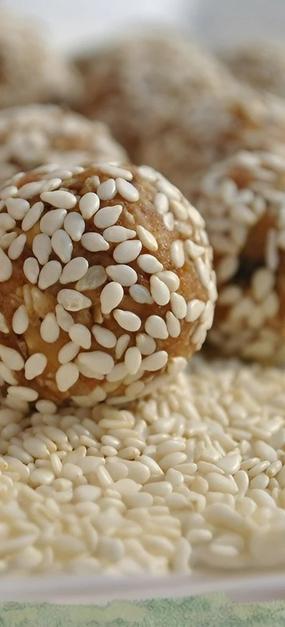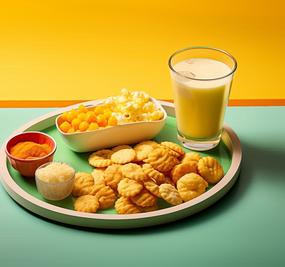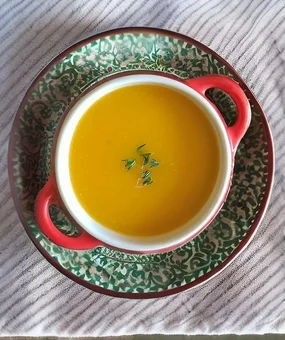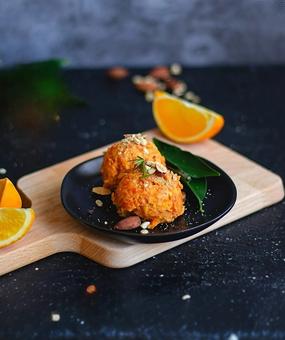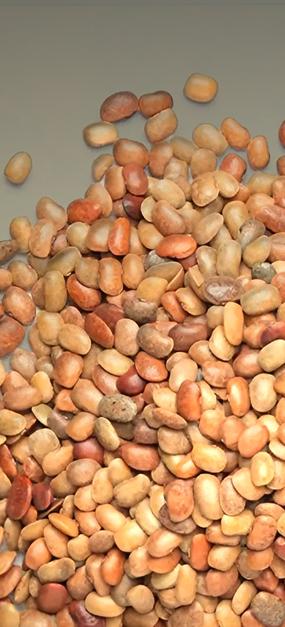Everything you need to know about ragi, the superfood with easy recipes to add to your kitchen menu.
Whole grains have made a huge comeback in recent times, given the growing awareness and increased movement towards ‘eating healthy’. People have begun to spurn refined, and processed food, preferring unpolished cereals and millets – like ragi.
What is ragi ?
For those of you who are from a region where ragi is not grown, ragi is, basically, a finger millet – a product that has been consumed by generations of people from Karnataka and some parts of Andhra Pradesh and Tamil Nadu.
It is called Nachani in Maharashtra, Nagali in Gujarat, Koda, or Mandua by Garhwali and Kumaoni people.
Traditionally, it has been suggested to mothers of young toddlers in South India as it is a nutritious staple food. In fact, many parents give it to infants as their first solid meal. Such are the health benefits of this millet.
Traditionally, it has been suggested to mothers of young toddlers in South India as it is a nutritious staple food. In fact, many parents give it to infants as their first solid meal. Such are the health benefits of this millet.
A generation ago, ragi was a regular in many South Indian households. However, modern food fads, like instant mixes have, unfortunately, replaced this nutritious flour. The times we live in demand that this wonder food makes a comeback in more households!
Why? Because of the multiple health benefits of ragi!
Ragi – The whole grain
The main USP of ragi is that it is a whole grain. What that means is that ragi contains all three parts of the kernel i.e. the bran, germ, and endosperm. Don’t all cereals? Well, rice, wheat, and other popular and widely-used cereals are often processed. So, they are left with only the endosperm. Ragi may also be processed through milling, malting, and fermentation. However, since the grains are quite small, polishing is not so easy. So, the chances of gaining the whole nutrition of the grain are higher with ragi.
Ragi : Health benefits
- Source of calcium: Ragi is one of the best sources of calcium from a non-dairy product, with about 344 mg of calcium per 100 gm of ragi. So, it is ideal for those who are lactose intolerant or vegan. As aging women are prone to bone-related issues such as osteoporosis, ragi is a good addition to their diet too. Growing children are another demographic that must consume ragi to fortify themselves with the calcium in it.

- Rich in protein: Ragi is also rich in proteins, with about 6-8 percent protein content, making it a suitable addition for a vegan and vegetarian diet.
- Full of iron: Vegetarians frequently find themselves on the lower limits of the hemoglobin count. Ragi is a good source of iron for them, and a good dietary addition for those who are anemic.

- Gluten-free: Allergies abound in many regions among different people and gluten is one of the main irritants. Ragi is safe to consume since it does not contain gluten.
- Good for weight-loss and diabetes: Ragi is ideal for weight-loss and those with diabetes as it only contains 1-2 percent fats. It also helps regulate blood glucose levels.
- Easy to digest: Despite being highly fibrous, with about 15-20 percent dietary fiber, ragi is an easily digestible cereal. This is because it is low in unsaturated fat and free from gluten. This is also why it is given to babies as a first meal.
- Lowers cholesterol: Ragi also helps lower bad cholesterol levels.

- High potassium content: Ragi has very high levels of potassium – 408 mg per 100 gm of ragi.
- Various amino acids: It also has some essential amino acids – isoleucine, leucine, methionine, and phenylalanine – which are not found in other starchy items.
- Grows in arid regions: Known as the poor man’s grain, the ragi crop requires very little water. This makes it ideal for growing in many parts of the world.
How to use ragi : Ragi grains are washed and left to dry in the sun for 5-8 hours. They are then powdered to make ragi flour. This is the most common form in which we use ragi.
Now that we know why we should eat it, explore some popular and time-tested recipes with ragi.
Ragi recipes
I. Instant Ragi dosa
Prep time: 25 mins
Cook time: 10 mins
Total time: 35 mins
Servings: 3-4 people
Ingredients:
- 1 cup ragi or finger millet flour
- ½ cup semolina (sooji) or rice flour
- Salt to taste
- 1 cup grated vegetables like carrot, beetroot, ginger, zucchini, and onions
- 1 sprig of curry leaves
- 1 green chili
- 5-6 glasses of water
How to prepare:
- Mix the ragi flour, semolina, grated vegetables, chili, and curry leaves with water. Leave it for 20 minutes.
- Your instant dosa mix is now ready to use!
- You can make dosa on a tawa (flat frying pan) by spreading the batter on it.
- Sprinkle ½ tsp oil or ghee on it.
- Flip the dosa once one side looks golden brown.
- When both sides are brown, remove from the flame.
Your crispy and delicious dosas are ready to eat!
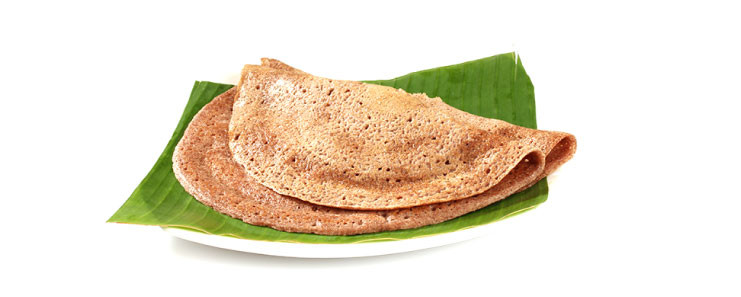
II. Ragi mudde
Prep time: 1 min
Cook time: 10 mins
Total time: 11 mins
Servings: 2 people
Ingredients:
- ½ cup ragi flour
- 1 cup water
- Salt to taste
How to prepare:
- Heat water in a container.
- Add salt and 1 tbsp. of ragi flour to it. Mix well, ensuring there are no lumps.
- Once the mixture begins to boil, add the remaining flour.
- Take off the flame and mix well so there are no lumps.
- The mixture will be thicker, though not completely solid yet.
- Keep on a low flame for another 2-3 minutes with a lid.
- Turn off the flame and allow it to cool.
- Once cool, grease your hands with some ghee and make balls of the mixture.
Your ragi balls or ragi mudde are ready to eat with sambhar/rasam (soup-like delicacies with lentils).
This is a great way to start as well as end your day as you can make it for breakfast as well as dinner. Apart from being a time-saver in terms of preparation, it is also extremely filling and comes packed with all the nutrients you need for your balanced diet.
III. Ragi oats laddoo
To indulge the sweet tooth in you, try this nutritious and filling laddoo!
Prep time: 15 mins
Cook time: 20 mins
Total time: 35 mins
Servings: 5-6 people
Ingredients:
- ½ cup ragi flour
- 1 cup oats flour
- 8-9 soft dates
- 2-3 tbsp. ghee
- 1 tsp cardamom powder
- 10 cashew nuts cut to pieces
- 10 almonds cut to pieces
- Water as required
How to prepare:
- Remove the seeds from the dates (leave aside 2-3 dates for later), soak in ¼ cup of warm water, and mash it with your hand till it has a paste-like consistency. Keep aside.
- Roast the ragi flour with 1 tbsp. of ghee in a pan for 5-8 minutes. Take off flame and keep aside.
- Roast the oats flour similarly with 1 tbsp. of ghee.
- Add the roasted ragi flour and mix it well with the roasted oats flour on a low flame.
- Add the dates paste to the flour and mix.
- Then add the cardamom powder, and mix on a low flame.
- Turn off the stove. Allow the mixture to cool down.
- Finely chop the 2-3 dates left aside, and add to the mixture.
- Add the cut nuts, and mix into a dough.
- Roll the dough into small balls (laddoos)
Your delicious laddoos are now ready to be gobbled up!
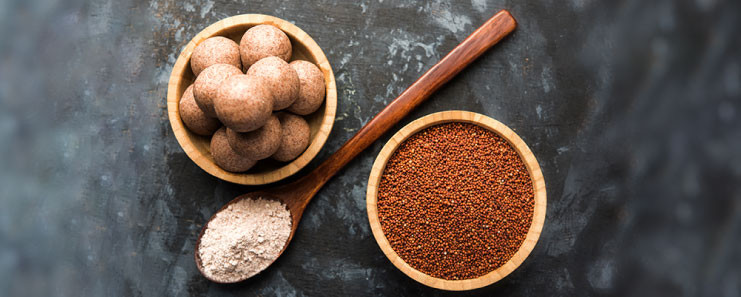
IV. Ragi roti or ragi chapatti
Prep time: 10 mins
Cook time: 25 mins
Total time: 35 mins
Servings: 3-4 people
Perhaps you are from the North of India and prefer Indian breads like rotis. Here is a recipe for you to feast on this finger millet. Adding wheat flour to ragi makes it easier to roll.
Ingredients:
- 2 cups ragi flour
- 1 cup wheat flour
- Salt to taste (normally 1 tsp)
- Cumin (optional)
- 1 chopped green chili (optional)
- Coriander leaves (optional)
- 1.5 cups water
- 1 tbsp. ghee
How to prepare:
- Mix the ragi flour with the wheat flour and add salt.
- Add the cumin, chili, and coriander leaves into it.
- Add water little by little and mix into a dough.
- Keep the dough aside for 20-25 minutes.
- Make small balls of the dough, and flatten them into circles (rotis) with a rolling pin. Add more dough so the circles don’t stick or break.
- Keep a flat pan on medium flame and add these flattened circles one at a time.
- You can cover the pan with a transparent lid till the rotis turn brown and puff up.
- Flip it around so the other side also gets roasted; cover with a lid.
- When both sides are evenly brown, remove from the flame, and keep in a casserole.
- Spread ghee on both sides; this will soften the rotis.
Ragi rotis can be eaten with any vegetable dish – dry or gravy.
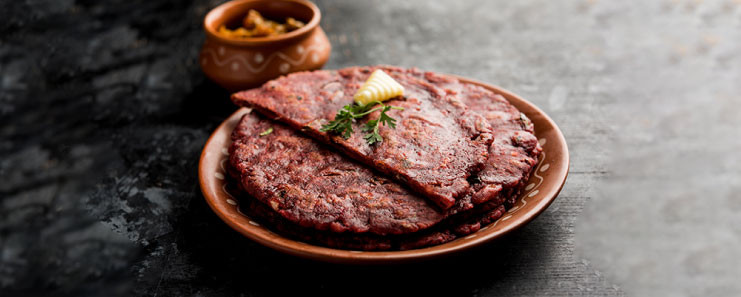
V. Ragi kanji or Finger millet porridge
Prep Time: 5 mins
Cook Time: 15 mins
Total Time: 20 mins
Servings: 4-5 people
If you are looking for a quick and filling drink for breakfast or any time during the day, look no further!
Ingredients:
- ½ cup ragi flour
- 1 cup water
- 2 cups milk
- 10 pitted dates
- chocolate chips and cocoa powder (1.5 tbsp.) to garnish as per taste
How to prepare:
- Mix the ragi flour with water and heat it. Cook on low heat. The mixture will thicken, and turn a bit glossy.
- Remove from heat. It will thicken further as it cools, and also change color.
- Take a portion (say ¼ cup) of the cooked ragi mixture in a mixer-grinder, add pitted dates and cocoa powder, and blend well.
- Next, add milk and blend to combine.
- Pour into serving glasses.
- Immediately, garnish with a pinch of cocoa powder and a few chocolate chips.
You can present this to your children as a chocolate calcium drink that they can gulp down before they start their day!
If you would like to explore some more healthy recipes, click here.
If you would like to delve deeper into better health, to make your body and mind strong, you could explore the Wellness Program here.
Written with inputs from Kaushani Desai, Ayurvedic cooking teacher, The Art of Living



